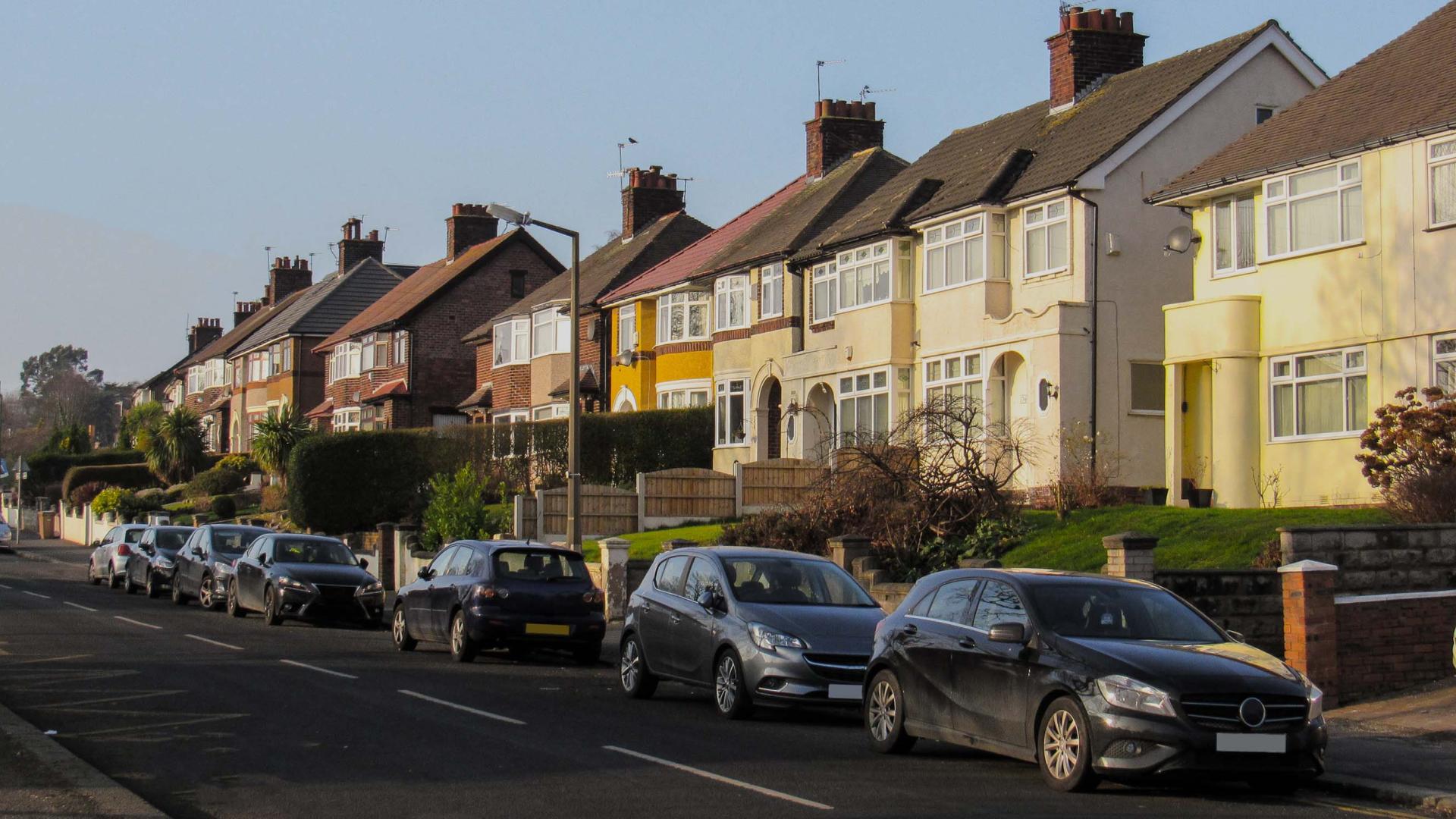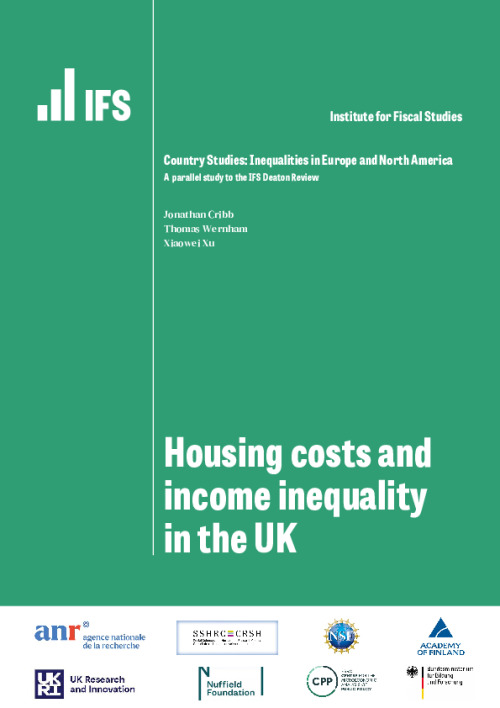Key findings
- Income-based measures of living standards do not typically take housing costs into account. However, there are good reasons to deduct housing costs from disposable incomes when measuring poverty and inequality in the lower part of the income distribution. These include the fact that, in the U¬¬K, housing costs of poorer people are often covered by housing benefit, meaning that if housing costs rise then so do benefit incomes. And the living standards of people who own their home outright are underestimated compared with the rest of society if the fact they pay neither rent nor a mortgage is not accounted for. In support of these arguments, disposable incomes measured after deducting housing costs (AHC) are more correlated with non-income-based measures of low living standards – such as material deprivation and food insecurity – than incomes measured before deducting housing costs (BHC).
- Poorer households spend more of their income on housing than do richer households, and this difference has increased over time. In 1968, housing costs constituted 9% of average disposable incomes for households in the poorest quarter of the population; this rose to 26% in 2015 before falling to 21% in 2021. Even after accounting for housing benefit, the poorest households spent 19% of their income on housing in 2016, the latest year for which these data accounting for housing benefit are available. In contrast, for the richest quarter of the population, housing costs constituted just 4% of average income in 1968 and 6% in 2021.
- Housing costs have therefore become increasingly important to the calculation of relative poverty rates. In 2021, the poverty rate was 17% using incomes measured before deducting housing costs, but 22% using incomes measured after deducting housing costs. BHC measures imply a fall in poverty of 1.4 percentage points between 2008 and 2021. In contrast, when measured AHC, poverty fell by just 0.5 percentage points over this period.
- Some of the substantial changes in housing costs over the last few decades result from factors beyond households’ control, rather than from changes in housing quality valued by households. For example, increases in social rents from the mid 1990s to the mid 2010s – as well as the fall between 2015 and 2019 – were the direct result of government policies. Without measuring incomes accounting for housing costs, these rises in social rents would actually appear as an increase in incomes for lower-income households, since increased housing benefit partially paid for them. Previous research has found the rise in private rents from the early 2000s to the mid 2010s also reflected increases in the price of housing rather than improvements in quality. Increases in rents over long periods mainly affected poorer households, who are much more likely to rent: in 2021, 30% of households in the poorest quartile were social renters and 19% were private renters, compared with 3% and 14% respectively in the richest quartile.
- On the other hand, owner-occupiers saw big falls in housing costs as a result of the fall in interest rates since the financial crisis. As a share of income, housing costs for mortgagors fell from 15% in 2008 to 7% in 2021. This mostly benefited households in the richest quarter of the population, of whom 52% owned their home with a mortgage in 2021, compared with 18% in the poorest quarter.
- There is an especially strong case to examine incomes after deducting housing costs when comparing deprivation across different age groups, because of the huge differences in housing tenure seen across these groups, reflecting differential (housing) wealth accumulation for people at different stages of their lives. For example, adults aged 65 and above will tend to face much lower housing costs on average, not because they live in lower-quality homes, but because over three-quarters of them own their homes without a mortgage. Whilst adults aged 65 and over have a poverty rate of 20% when using incomes measured before deducting housing costs – 3 percentage points above the national average – when using incomes measured after deducting housing costs their poverty rate is only 18%, or 3 percentage points below the average.
Introduction
Income-based measures of living standards do not typically take housing costs into account. For example, the OECD’s statistics on income inequality and relative poverty across countries are based on measures of disposable incomes – incomes from earnings, benefits, investments and other sources, net of tax – that do not first deduct housing costs, and similarly with the ‘Canberra Group’ definitions (United Nations, 2011). In this report, we set out the case that there are good reasons, both conceptually and empirically, to consider deducting housing costs from disposable incomes in the measurement of material living standards, particularly when it comes to inequality in lower parts of the income distribution.
Focusing on the UK, we show that housing costs have increased considerably for lower-income households compared with higher-income households in recent decades, leading to a divergence in poverty and inequality measures based on incomes before and after deducting housing costs (BHC and AHC respectively). These trends can be partly explained by changes in housing tenure and by differences in the evolution of housing costs between the tenures, often driven by institutional factors beyond households’ control. Finally, we illustrate how the choice of AHC or BHC income measures has substantial implications for our conception of who is living on a low income, using inequalities by age as a key example. Regional patterns of low income also differ depending on the measure used, though more caution needs to be exercised when interpreting regional incomes after deducting housing costs.
Throughout, we use definitions of income and housing costs consistent with the UK’s Department for Work and Pensions’ national statistics on household incomes (known as the Households Below Average Income statistics). Incomes include earnings, benefits, investment income and income from other sources, net of direct personal taxation. Housing costs measured in UK poverty statistics include rental payments, mortgage interest payments (but not mortgage principal payments) and, where applicable, a few much smaller costs such as service charges and buildings insurance. Mortgage principal payments are excluded because these are akin to saving, allowing households to build up wealth which they can potentially spend later by downsizing or by taking equity release products, or pass on to children as an inheritance. All figures are for the whole UK since 2002–03 but exclude Northern Ireland from 1968 to 2001–02.












